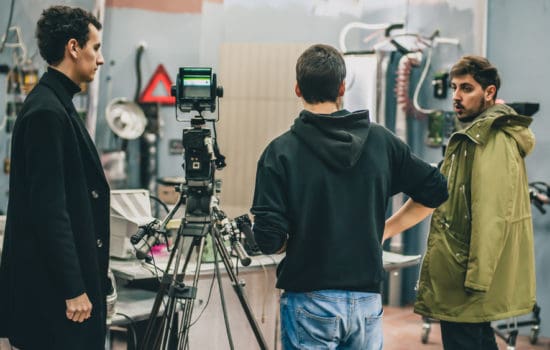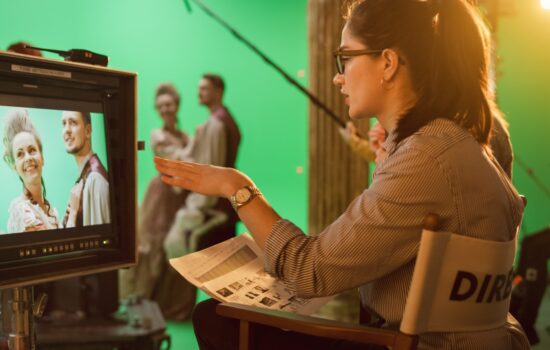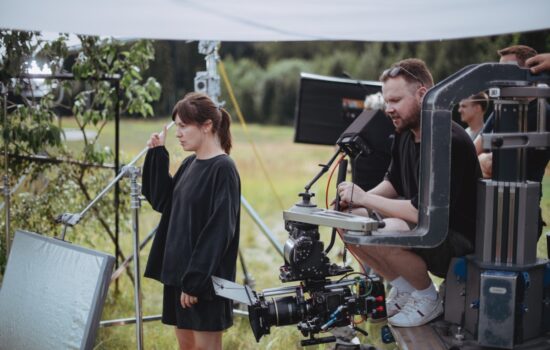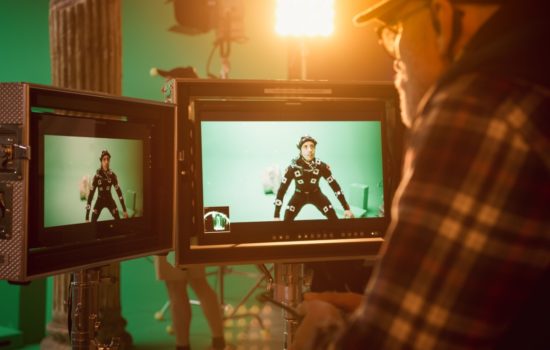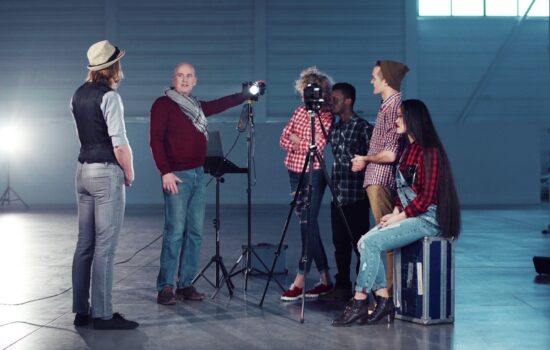Stunt Coordinator

How To Become a Stunt Coordinator
People also ask
Career Description
A Stunt Coordinator is hired by a production to coordinate and choreograph all stunts on a set. They also hire Stunt Actors, who work scenes that are considered too risky for the Actor.
Stunt Actors take mitigated risk as a part of their job, and they are highly trained to do so. Stunt Actors often attend stunt school or are highly specialized in a specific area of stunt work. (Most Stunt Coordinators start off as Stunt Actors.) The Screen Actors Guild also covers Stunt Performers and many sets require you are a member to do stunt work on set.
Stuntman Ryan Gray, who has credits on Spider Man 3, Captain Marvel, Grimm, and many other productions says, “Every day is different. If you’re not working, you’re finding work, and there are so many different ways to do that. The work can often be getting the work.”
Working out on downtime is essential, according to Gray: “You go to workouts and an open gym, maybe training on the trampoline, or getting together and editing your own fight scenes to have some content to show people. Networking is really the name of the game. Hustling is a big part of the stunt industry, which is a little different than the rest of the industry.
“It goes back to the old days when all the stunt guys were Cowboys, and you might help on a ranch and they would get to know you and see how you work. Stunt People still go out there and find out where a show is being shot, find out who the Coordinator is, go there and hustle them, and intro yourself and show them your reel and talk to them.
“You do have to know set etiquette and know not to get in the middle of production. But the hustle is an important tradition in stunts.”
Gray says the most important things to remember about a career in stunts is both that you are a performer, and that you are a performer taking risks. “Anything we do is going to be some sort of mitigated risk. Performing with risk is the basic overall view of it, but it gets really specialized — some people might fall off a motorcycle, or someone might do a car turn over, or a car scene, or falling on the ground, or doing wire work.”
“So really, stunts are a wide variety. Sometimes we might have lines, so there’s a very broad skill set in stunts. We work with a lot of different departments. It’s really a very interdisciplinary job, and we work with all the departments on set in some form or fashion. It definitely takes a broad skill set to be in stunts.”
What does a Stunt Coordinator do?
A Stunt Coordinator is a vital part of any film production when there are special and sometimes dangerous physical acts needing to be performed for the story being told. To this end, the Stunt Coordinator will collaborate with all pertinent individuals on a project to design the stunt sequences and hire the proper individuals to perform them.
Salary
Stunt Coordinators make an average annual salary of approximately $42,500. The salary range for Stunt Coordinators runs from $20,000 to $70,000+.
“This is a feast and famine industry,” says Gray. “Saving money is a really important skill to learn. If you work on a job and make $10K, don’t just go and spend it. Just save it. Just sit on it. You might not work for four months. That’s a major life skill that no one talks about but will really help you.”
How much does a Stunt Coordinator cost?
Do you need a Stunt Coordinator for your film? It might cost you. Depending on the nature of the stunt sequence and the number of them for a project, you might be paying a Stunt Coordinator anywhere between $11,000 and $295,000 for their expertise.
Hey, what do you think about trying our new Film Career HelperFilm Career Helper really quick? It’s totally free and could help get your career moving fast! Give it a try. It’s totally free and you have nothing to lose.
Career Outlook
To embrace a life of stunts, you also have to embrace a life of physical fitness. “There are expectations that Stunt People will be the fittest and most athletic on set. If you show up and your Actor is in better shape than you are, that looks bad,” stresses Gray. “You need a physical regimen. It’s great to find people to train and collaborate with.”
“Every day in this field is different, and that’s one of the reasons why I like it. Being physical and active is a priority. I wanted to find a career that I could pursue that would allow me to be an athlete, and I found stunt work. Some days you are working out, some days you are looking for work, or collaborating with friends, and some days you do have to devote to rest and recovery.”
Career Path
Gray cautions anyone wanting to get into stunts to be aware of the nature of the ups and downs within the business: “You might work a lot and then for whatever reason you don’t get a call for six months. The real way you keep progressing is to keep networking, keep being out there.”
“I’ve seen very established Stunt Performers and Stunt Ladies, they still hustle, and they still get out there. You just gotta keep pushing your craft. You wanna keep shooting, or keep moving forward. The work is getting the work. It’s super fun, but there’s definitely a lot of pressure.”
Gray explains working as a Stunt Coordinator puts you in charge of the Stunts Department on set: “It usually goes Stunt Coordinator, then Fight Coordinator that specializes in fights, then the other performers, and a rigging crew — everyone is under the Stunt Coordinator.”
According to Gray, there isn’t a fast, set way to become a Stunt Coordinator: “You work as a Stuntman and then a Producer really likes you and knows that your skill set fits the next show they are working on, and then maybe they will ask you to come aboard and work as a Coordinator. A Director you did a short with is all of a sudden doing features, and they take you with them.”
“It just kind of boils down to getting yourself out there and never really saying ‘no’ to an opportunity, whether it’s big or small. Get yourself out there and represent yourself in the best way. Never look at an opportunity as below or beneath you. My mantra is if you’re available, go help out, and go be a part. Just say ‘yes.’ Don’t ever pass up an opportunity in this business because you never know what it will turn into.”
Gray stresses again that employment as a Stunt Coordinator and Stuntman can be sporadic. “Try to never say ‘no’ to a job,” he says.
Gray also says sometimes you end up in a certain side of the business like more on the TV side, or the film side because you build your reputation there:
“For me, 80 to 90 percent of my work has been in TV.” Finally, Gray says keeping that part-time job when you are starting out is a good idea as jobs that pay $150 or $1,000 a day could both yield equally good future opportunities. “The opportunities are more important than how much you will make that day,” Gray emphasizes.
- Gray again says every Stunt Performer should strive to get their SAG card as quickly as possible. “I’d tell anyone to go to Central Casting and do background work to get into the union.”
- Gray also wants newcomers to know the job is not for the faint of heart: “Really sit down and ask yourself, ‘Are you going to put yourself into it 100 percent?’ Are you willing to put 6 or 7 years into it until you make it a full-time career? There are a lot of stepping stones. There’s no checklist or job description, it’s all self-motivated. You should only do this if this is the only thing you see yourself doing, because it’s hard. I asked myself, and my answer was ‘yeah!’ You really gotta ask yourself if this is the only thing you wanna do. It really is super hard, and getting that break doesn’t happen for everyone.”
Who is the best Stunt Coordinator?
Stunt Coordinators aren’t often household names, but the most accomplished ones are certainly well-known in the film industry. Among some of the more established Stunt Coordinators are Simon Crane, Andy Gill, Jack Gill, and Sam Hargrave.
Experience & Skills
Gray encourages aspiring Stunt Performers to learn set etiquette as early as they can: “There are so many nuances and so many things that you can’t make a list, you really just have to learn through experience,” he says.
“Be helpful and positive, and you kind of have to have a thick skin. There is a lot of pressure and tension on set. Not getting defensive and not taking things personally is a really good attribute in this industry. There’s so much going that having good people skills and life skills is important. You have to learn how to gauge and read people.”
“Don’t be too eager. Be really patient and mindful. Listen more than you talk. You’re just a cog in the machine. You have to know that you’re not really the most important person on set, no matter what. Humility is a good attribute to have as well.”
A collaborative personality is always valuable for jobs on set. “There’s no one personality for this work, it takes all kinds, but it’s most important how you work with other people,” says Gray. “How you are able to collaborate. You have to know how to work with people both above and below you and alongside you — that is essential. Teamwork is the most important.”
Education & Training
Gray says there are many ways to go with training for stunts, but he recommends martial arts above all else: “There are just so many fights in TV and film. It all takes body awareness. Martial arts really helps you with body awareness. Gymnastics is also really good. Getting some really good training is really important because it’s really competitive. If you wanna differentiate you could consider motocross, or drifting.”
Gray also reminds that no matter what you will also have to learn to be comfortable on camera. Gray recommends putting yourself on camera with friends and analyzing how you can improve: “Ask yourself ‘What can I do to make it look better?’ It’s getting involved with people who are in the community and learning how to get good for camera. I wouldn’t recommend a stunt school that costs a lot of money.”
“In general, you learn much more by working with Coordinators and Performers who are out there working [on set]. Just do background work to see set etiquette in action, and you might meet Stunt People that way.”
Additional Resources
Gray is a member of SAG/AFTRA and appreciates the protection the union provides. “As a Stunt Performer, you don’t really want to get involved in non-union stunts. It’s not necessarily a bad thing, but I once got a non-union commercial and I got hurt on set. I needed some stitches, and production didn’t cover the expenses.
“The expense of the injury was as much as I made that day, so yeah, as a Stunt Performer be very careful with non-union work, especially with the risk involved. If you are trying to get into stunts you have to get into SAG. That should be your number one goal. Doing background work is often your fastest way into the union, so starting there can be great.”
FAQ
What is the single biggest suggestion you would give to someone wanting to get into this career?
“Give 100 percent and don’t stop. It took 6 to 7 years before this became a full-time career for me. I was moving in and out of my truck and working hard to stay in shape and make videos, and now I’ve had a career for 10 years, but those 6 or 7 years were so bleak and a lot of people told me to move on.
“You just gotta keep at it 100 percent. As bleak as it is, there are a lot of stories of people’s perseverance paying off.”
What’s the #1 mistake people make when trying to get into this career?
“Probably people thinking they are better than they really are. All of us come from a hometown and we are really good when we come from, and then you show up to LA and you might be good, but you’re not gonna be the best. There’s always gonna be someone better than you, so have a good attitude and really work hard. You are probably not gonna be the best person at the audition.”
What is the question people should ask about this career but rarely do?
“Life skills — discipline and motivation and being observant — knowing those life skills is really essential. There’s no set code of conduct. Everyone’s different, and you have to figure that out on the fly.”
If you could describe in one word what makes you successful, what would it be?
“Discipline.”
Sources

Ryan Gray
Ryan Gray has been working in stunts for ten years. His credits include working as a Stunt Double for James Franco in The Great and Powerful Oz as well as Spider-Man 3. You can catch him on television shows like the fairy-tale-based Grimm, Sleepy Hollow, and Agent X. He has also been featured on CSI, Lethal Weapon, True Detective, Brooklyn 99, and Marvel films.
Gray specializes in capoeira and often teaches workshops to Directors to help them learn the thematic and technical aspects of creating an action scene. He is a member of Stunts Unlimited.
To see Gray in action, check out his martial arts and stunt reels. His career in stunts has been featured in Justice for Hire, New Times San Luis Obispo, and Social Life Magazine.
References
- 1Multiple. "Stunt Coordinator Salary". ZipRecruiter.com. published: Dec 5, 2019. retrieved on: Dec 12, 2019
